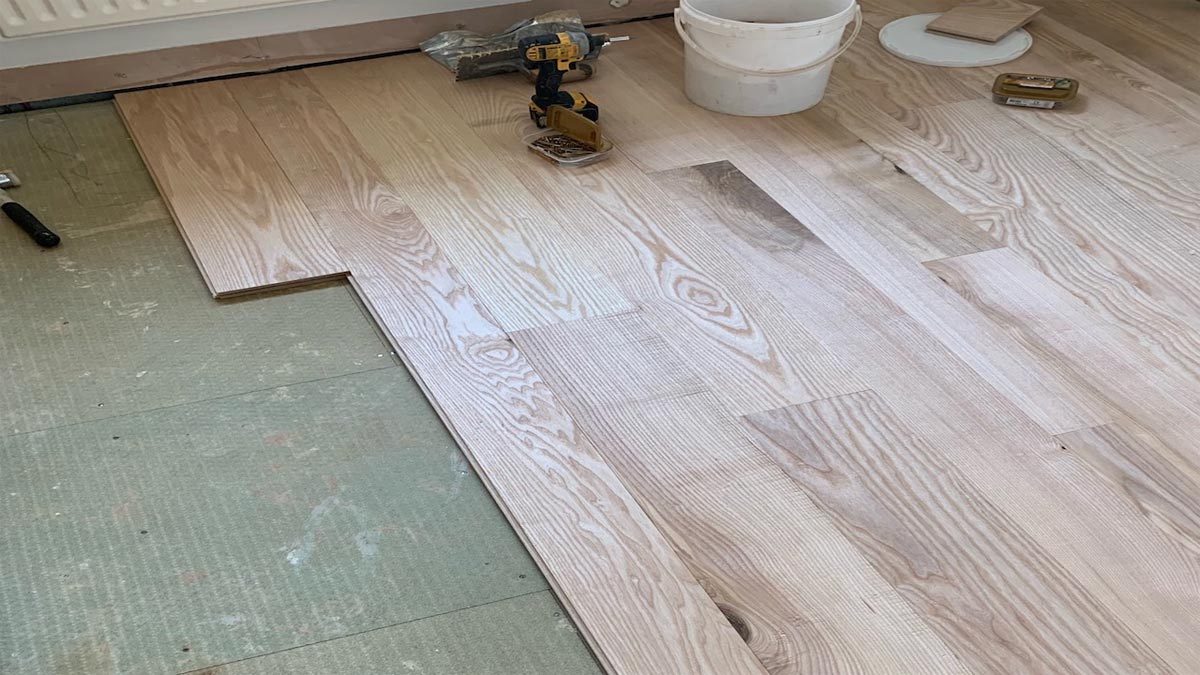
When purchasing a new hardwood floor it’s important to give some thought to the installation method. There are a few different methods of fitting wood flooring. Floating over an underlay, gluing down, nailing or screwing. The method selected is generally dependent upon the type of wood flooring (i.e. solid or engineered) but it also just as important to consider the condition of the existing subfloor.
SUB FLOOR
The laying of any wood floor is only as good as the sub-floor upon which it is laid. It is vital the sub floor is in a good sound condition as it may need improving to ensure stability. It must be clean, dry and free of dust. A level surface is required with not more than a 2mm fall over any area of 2 metres. There are three main types of sub-floor:- Floor joists or battens, existing floorboards or chipboard and concrete or screed.
Methods of fitting wood flooring are given below:-
NAIL DOWN METHOD
The nailing down method is the most common installation and involves nailing, stapling or screwing the boards directly to the prepared subfloor. Nails are placed through the tongue of the floorboards into the wooden subfloor. The method is sometimes called secret nailing as the nails are covered by the groove of the next board. This method works equally well for both solid and engineered flooring.
GLUE DOWN METHOD
The glue-down installation method involves the use of a strong bonding agent. The glue adheres the wood flooring boards directly onto the subfloor, or onto a moisture barrier installed directly on the subfloor.
Before beginning any glue-down flooring installation, it is important to ensure the subfloor is fully prepared and the material is dry and flat. As boards are adhered directly to the subfloor it takes on its shape. Therefore, if there’s a high spot on the subfloor, there will also be a high spot in the flooring. High spots require sanding down prior to laying. Likewise, any low spots require filling with levelling compound to make them flat before installation. This preparation will help ensure the long-term performance of the flooring.
Properties of each adhesive type vary significantly among manufacturers, so one should always check the specific recommendations. Factors to consider are the relative humidity of the room. This could influence the bonding properties of the adhesive. No matter which type of adhesive is used, it is important to clean up any stray adhesive from floorboards immediately. Allowing the adhesive to remain on the face of the flooring may result in unsightly white spots when the adhesive dries. It’s also very difficult to remove once it dry and could cause a chemical reaction with the finish.
FLOATING METHOD
With a floating floor the material is neither nailed nor glued to the subfloor, but floated above it. This method is generally used for engineered flooring. Floating is a term describing a specific way of fitting a floor. Installed over a suitable existing underlay such as concrete, plywood or vinyl which itself is also laid over an appropriate sub floor. A floating floor is not fixed to the sub floor and the only part that is glued is the tongue to the groove. The whole floor relies on the weight of the floor to keep it in position. It’s a popular and quick way of laying engineered flooring.
Click installation does not not require adhesives or clips to install the flooring. The floorboards simply ‘click’ together
ROOM PREPARATION
No matter which installation method the same basic installation principles apply. Before work begins, the flooring contractor’s first priority should be to see if the sites conditions are acceptable for the flooring installation to take place.
The installation of wood flooring is generally one of the last jobs completed in a room. This ensures the subfloor is ready. Wet trades like plastering and painting must be completed to guarantee humidity levels are correct. Flooring needs to be received into the room where it is to be laid. This is to allow it acclimatise before installation see our guide on acclimatisation. If it is not given sufficient time to acclimatise, problems such as cupping or cracks and splits may develop.
The information provided here is given only as a guide. We strongly recommend you arrange a professional flooring contractor to carry out the installation of your wood flooring.

